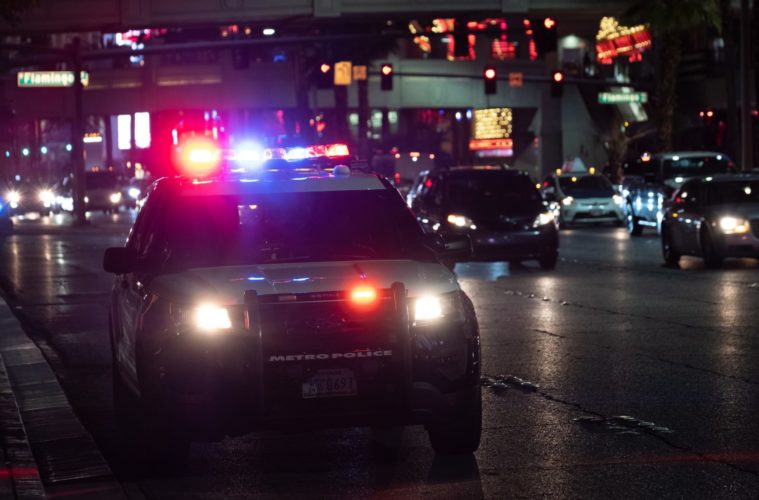As the 50th anniversary of the War on Drugs approaches later this month, Joe Biden’s Department of Justice has announced it will be revamping its efforts to reduce violent crime.
Attorney General Merrick B. Garland revealed the new DOJ plans last week. The administration claims the new approach is meant to protect communities from the recent increase in major violent crimes.
“The Deputy Attorney General is issuing a comprehensive strategy to deploy our federal resources in the most effective way, disrupting the most dangerous threats and supporting the ground-level efforts of local law enforcement. In this endeavor, we will engage our communities as critical partners,” Garland noted. “And through our grant-making, we will support programming at all stages – from the earliest violence interruption strategies to post-conviction re-entry services.”
This all sounds well and good. But some believe it may just be another extension of the War on Drugs framed as an effort against violent crime.
“Violent crime is irrefutably linked to the transnational criminal organizations flooding our communities with illicit drugs,” said Drug Enforcement Administration Acting Administrator D. Christopher Evans. “Leveraging our strong partnerships with state, local and Tribal law enforcement, DEA will concentrate our efforts on the most serious offenders in areas with the highest crime rates.”
For those under the impression the DEA was already targeting its resources at the most violent offenders, just look at the decades that helicopters spent circling the hills of Northern California in search of cannabis – eventually much of it a state-legal medical crop. So at least part of what the DEA was telling us last week was that they’d go after the real bad guys.
But is that the case? Over the last 50 years, how many nonviolent offenders of color have found their way to a jail cell for every real kingpin taken off the street? And someone always stepped in to fill the void left by major enforcement actions over the years. Regardless of the fed’s tactics, the black market carried on. The borders were just closed for a year, and nobody ran out of drugs.
While transnational drug organizations were put in the crosshairs again by the DEA, the wider plan suggests building trust and legitimacy in the community as the first step. In the age of militarized drug raids and smartphones putting the worst police interactions on blast, it could prove tricky. But the DOJ believes meaningful law enforcement engagement with the community and accountability are key. One might argue accountability in itself is a meaningful engagement with the community by providing justice for wrongs they may have or will face.
The DOJ noted some of the programs under the plan will include FBI analytics being provided to investigations at the local level, ATF agents embedding with local homicide units and the United States Marshals Service, in coordination with state and local authorities, conducting fugitive sweeps throughout the country with a focus on warrants for homicide, aggravated assault with a firearm, aggravated robbery, robbery with a firearm, rape or aggravated sexual assault. And we want to emphasize we’re not hating on the grants and prevention programming planned in all this, which should be a constant conversation unattached to this response action.
But again, for all the bad guys out there, there are concerns the low-hanging fruit will end up filling the basket. They’ll likely end up being street dealers created by the prohibition of drugs who are not willing to flip the on the next guy in the chain. Much of the time these are participants in the victimless crime of supply and demand, but certainly not always. Some will flip, but many will be a nonviolent offender who wasn’t actually a threat to society ending up in a cage. Nevertheless, they’ll contribute to the eventual “dangerous people off the streets” number we’ll see from this wave of enforcement.
Maritza Perez, Director of the Office of National Affairs at the Drug Policy Alliance, explained how the drug war has been waged in the name of preventing violent crime numerous times.
“Associating ‘violence’ with drugs is the oldest scare tactic in the drug war’s playbook. This goes back to the same racist tropes used to villainize Chinese immigrants for their opium use in the late 1800s, Mexican immigrants for using marijuana after the Mexican Revolution, and Black people for heroin and crack-cocaine in the present iteration of the drug war that has been going on for the last 50 years,” Perez told L.A. Weekly. “And the reality is – each and every time – we have not seen our communities get any safer. In fact, it’s been very much the opposite, with Black, Latinx and Indigenous communities completely devastated as a result. This administration doubling down on these same enforcement-first approaches, under the guise of fighting ‘violent crime,’ is unconscionable.”
The War on Drugs turns 50 on June 18th.
Advertising disclosure: We may receive compensation for some of the links in our stories. Thank you for supporting LA Weekly and our advertisers.

